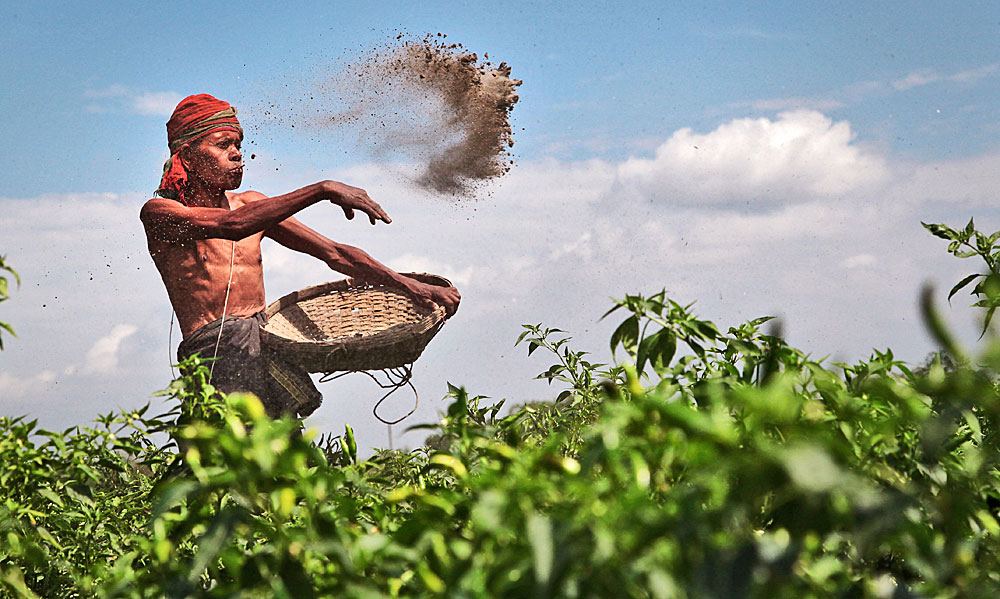
Activities on Sustainable Livelihood and Food Security address issues of food insecurity and recurrent hunger that exacerbate chronic poverty and deprivation. With many developing countries experiencing rural out-migration and decline in rural agricultural labor, food production and post-harvest storage have become critical issues of concern for many small farm households who form the bulk of food producers in most developing countries.
While the profitability of agricultural production by small farmers depends on the quantity, quality and returns from output, post-harvest losses directly undermine this measure of profitability and the sustainability of agriculture, particularly for small rural farm households. The program aims to contribute research into post-harvest solutions that protect crops and raise farm income.
Professor Laurence Simon pioneered, in collaboration with Israeli scientists Shlomo Navarro and Jonathan Donahaye, pesticide-free methods for protection of durable grains needed for emergency food assistance and small farmer storage of harvests. This work in Africa was initially tested under the World Food Program and international NGOs. His research and pro-bono advising continues today.
GDS aims to assist village level farmers in selected countries in utilizing improved traditional food storage technologies as well as introduce modern methods where appropriate and affordable. The post-harvest sector in agriculture aims to maximize the availability of food to consumers and viable seed to farmers through effective storage, transport and processing with minimum loss of quantity, quality and monetary value. While small farmers in developing nations traditionally stored durable grains on farm or homestead, or in collective village grain banks, traditional storage methods began to fail with green revolution varieties. With rising post-harvest losses, farmers throughout developing nations turned to chemical pesticides, often engineered for highly toxic field applications and not storage environments. Without training or knowledge of the health hazards, farmers and their families continue today to expose themselves to highly toxic substances.
Post-harvest losses occur when grain is exposed to moisture, insects, birds and rodents. Poor storage often results in fungal contamination and the growth of dangerous mycotoxins. Storage losses account for significant losses to food security and farmer household income. They account for massive losses at national buffer stocks in some countries and loss of life when emergency food relief is lost for lack of storage.
With the phasing out of methyl bromide, a major fumigant in grain storage, mandated by the Montreal Protocol of 1987, Prof. Simon began the search for innovative technologies for environmentally safe and affordable grain storage. In association with Israeli food storage scientists Shlomo Navarro and Jonathan Donahaye, the first trials in the developing world of hermetic storage were conducted under the supervision of the UN World Food Program in the 1980s. Today, these technologies are advanced through a private sector company, GrainPro, Inc., founded by Prof. Simon. GDS, however, is focused on low-cost and safe methods of food storage, from the humble electric fan prolonging the shelf life of market tomatoes, new cold room technologies for village markets, to the use of neem tree oil or ash interspersed with grain in aesthetically beautiful traditional silos.
